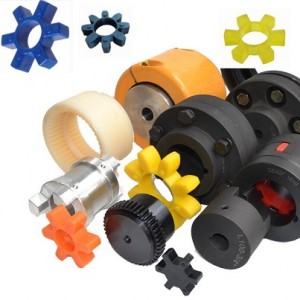Rubber & Plastic Couplings Polyurethane NYLON PTFE NBR FKM
Rubber & Plastic Couplings Polyurethane NYLON PTFE NBR FKM
Polyurethane has established itself as a leading manufacturer, supplier, trader, exporter and importer of superior quality Polyurethane (PU) Products. Their use is critical in providing a way for fluid power to be converted to linear motion.
Application of Rubber Couplings
Rubber couplings are widely used in various mechanical transmission systems, such as industrial equipment such as generator sets, compressors, and machine tools. In the manufacturing process, there are many types and models of couplings that need to be selected based on specific transmission requirements.
HUB & SPIDER DETAILS
HUB DETAILS
GS sizes from 9 to 38 are made from Aluminium Alloy material.
GS sizes from 42 to 65 are made from Steel.
GS hubs are manufactured with high precision machining.
The jaws are machined with concave shape and entry chamfer for easy assembly.
The concave shape in jaws of hub and the convex shape on the polyurethane spider allows for better angular, parallel and axial misalignment.
These hubs are available in un-bored, pilot bored, finish bore & key-ways, and with different styles of clamping arrangements as per customer requirements.
Overall, rubber couplings play an important role in mechanical transmission, not only reducing equipment operating costs, but also improving equipment service life and stability.
1、 The Function of Rubber Couplings
Rubber coupling is a mechanical component that achieves shaft transmission through flexible connections of rubber materials. It mainly has the following functions:
1. Vibration relief: Due to the flexibility and elasticity of rubber, it can effectively alleviate vibration and impact during the transmission process, thereby extending the service life of the transmission system.
2. Absorbing shock: During the operation of mechanical equipment, the rubber coupling can absorb the shock generated during the start and stop of the equipment to avoid damage caused by the shock.
3. Reducing bearing load: Rubber couplings can transmit the rotation of the shaft to the other end of the shaft, balancing and sharing the load between coaxial bearings, thereby extending the service life of the bearings.
4. Adjusting the deviation of the shaft: Due to the flexibility of the coupling, it can also adjust the deviation of the shaft to a certain extent, maintaining the concentricity of the shaft.









